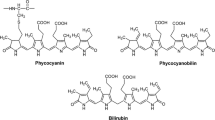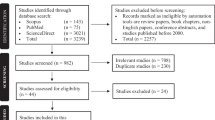Abstract
This study investigated the effects of soy bean extract fermented by Bacillus subtilis MORI (BTD-1) on blood glucose, hemoglobin A1c (HbA1c), plasma insulin, and pancreatic β islets in db/db mice. The BTD-1 (500 mg/kg) group showed significantly lower fasting blood glucose level (p<0.01) and postprandial 2 h blood glucose level (p<0.01) compared with the db control group. The BTD-1 (500 mg/kg) group showed significantly lower HbA1c level compared with the db control group (p<0.01). After 8 weeks of BTD-1 administration, the pancreatic islet architecture was preserved and the immunofluorescent intensities of insulin in BTD-1 (500mg/kg) group apparently increased compared to in the db control group. Plasma insulin levels were found to be significantly higher in the BTD-1 (500 mg/kg) group than in the db control group (p<0.05). In summary, our results suggest that BTD-1 has an anti-diabetes effect in a non-insulin dependent diabetes mellitus mouse model.
Similar content being viewed by others
References
Puavilai G, Chanprasertyotin S, Sriphrapradaeng A. Diagnostic criteria for diabetes mellitus and other categories of glucose intolerance: 1997 Criteria by the Expert Committee on the Diagnosis and Classification of Diabetes Mellitus (ADA), 1998 WHO Consultation Criteria, and 1985 WHO Criteria. Diabetes Res. Clin. Pr. 44: 21–26 (1999)
Campbell RK. Clarifying the role of incretin-based therapies in the treatment of type 2 diabetes mellitus. Clin. Ther. 33: 511–527 (2011)
Haffner SM, Howard G, Mayer E, Bergman RN, Savage PJ, Rewers M, Mykkanen L, Karter AJ, Hamman R, Saad MF. Insulin sensitivity and acute insulin response in African-Americans, non-Hispanic whites, and Hispanics with NIDDM: The insulin resistance atherosclerosis study. Diabetes 46: 63–69 (1997)
Del Prato S, Bianchi C, Marchetti P. β-Cell function and antidiabetic pharmacotherapy. Diabetes Metab. Res. 23: 518–527 (2007)
Ohkubo Y, Kishikawa H, Araki E, Miyata T, Isami S, Motoyoshi S, Kojima Y, Furuyoshi N, Shichiri M. Intensive insulin therapy prevents the progression of diabetic microvascular complications in Japanese patients with non-insulin-dependent diabetes mellitus: A randomized prospective 6-year study. Diabetes Res. Clin. Pr. 28: 103–117 (1995)
White JR. Alogliptin for the treatment of type 2 diabetes. Drugs Today 47: 99–107 (2011)
Inzucchi SE. Oral antihyperglycemic therapy for type 2 diabetes. J. Am. Med. Assoc. 287: 360–372 (2002)
Sheehan MT. Current therapeutic options in type 2 diabetes mellitus: A practical approach. Clin. Med. Res. 1: 189–200 (2003)
van de Laar FA, Lucassen PL, Akkemans RP, van de Lisdonk EH, Rutten GE, van Weel C. α-Glucosidase inhibitors for patients with type 2 diabetes: Results from a Cochrane systematic review and meta-analysis. Diabetes Care 28: 154–163 (2005)
Lee A, Patrick P, Wishart J, Horowitz M, Morley JE. The effects of miglitol on glucagon-like peptide-1 secretion and appetite sensations in obese type 2 diabetics. Diabetes Obes. Metab. 4: 329–335 (2002)
Rabasa-Lhoret R, Chiasson JL. Potential of α-glucosidase inhibitors in elderly patients with diabetes mellitus and impaired glucose tolerance. Drug. Aging 13: 131–143 (1998)
DeFronze RA. Pharmacologic therapy for type 2 diabetes mellitus. Ann. Intern. Med. 131: 281–303 (1999)
Grover JK, Yadav S, Vats V. Medicinal plants of India with antidiabetic potential. J. Ethnopharmacol. 81: 81–100 (2002)
Nakanishi H, Onose S, Kitahara E, Chumchuen S, Takasaki M, Konishi H. Effect of environmental conditions on the α-glucosidase inhibitory activity of mulberry leaves. Biosci. Biotech. Bioch. 75: 2293–2296 (2011)
Ezure Y, Maruo S, Miyazaki K, Kawamata M. Moranoline (1-deoxynojirimycin) fermentation and its improvement. Agr. Biol. Chem. Tokyo 49: 1119–1125 (1985)
Kwon HJ, Chung JY, Kim JY, Kwon O. Comparison of 1-deoxynojirimycin and aqueous mulberry leaf extract with emphasis on postprandial hypoglycemic effects: In vivo and in vitro studies. J. Agr. Food Chem. 59: 3014–3019 (2011)
Kimura T, Nakagawa K, Saito Y, Yamagishi K, Suzuki M, Yamaki K, Shinmoto H, Miyazawa T. Simple and rapid determination of 1-deoxynojirimycin in mulberry leaves. BioFactors 22: 341–345 (2004)
Zhu YP, Yamaki K, Yoshihashi T, Ohnishi Kameyama M, Li XT, Cheng YQ, Mori Y, Li LT. Purification and identification of 1-deoxynojirimycin (DNJ) in okara fermented by Bacillus subtilis B2 from Chinese traditional food (meitaoza). J. Agr. Food Chem. 58: 4097–4103 (2010)
Kim HS, Lee JY, Hwang KY, Cho YS, Park YS, Kang KD, Seong SI. Isolation and identification of a Bacillus sp. producing α-glucosidase inhibitor 1-deoxynojirimycin. Korean J. Microbiol. Biothechnol. 39: 49–55 (2011)
Kim JW, Kim SU, Lee HS, Kim I, Ahn MY, Kang SR. Determination of 1-deoxynojirimycin in Morus alba L. leaves by derivatization with 9-fluorenylmethyl chloroformate followed by reversed-phase high-performance liquid chromatography. J. Chromatogr. 1002: 93–99 (2003)
Matsui T, Ueda T, Sugita K, Terahara N, Matsumoto K. α-Glucosidase inhibitory action of natural acylated anthocyanins. 1. Survey of natural pigments with potent inhibitory activity. J. Agr. Food Chem. 49: 1948–1951 (2011)
Murao S, Miyata S. Isolation and characterization of a new trehalase inhibitor, S-GI. Agr. Biol. Chem. Tokyo 44: 219–221 (1980)
Cho YS, Park YS, Lee JY, Kang KD, Hwang KY, Seong SI. Hypoglycemic effect of culture broth of Bacillus subtilis S10 producing 1-deoxynojirimycin. J. Kororean Soc. Food Sci. Nutr. 37: 1401–1407 (2008)
Kwon DY, Daily JW 3rd, Kim HJ, Park S. Antidiabetic effects of fermented soybean products on type 2 diabetes. Nutr. Res. 30: 1–13 (2010)
Fujita H, Yamagami T, Ohshima K. Fermented soybean-derived water-soluble touchi extract inhibits alpha-glucosidase and is antiglycemic in rats and humans after single oral treatments. J. Nutr. 131: 1211–1213 (2001)
Chae JY, Lee JY, Hoang IS, Whangbo D, Choi PW, Lee WC, Kim JW, Kim SY, Choi SW, Rhee SJ. Analysis of functional components of leaves of different mulberry cultivars. J. Korean Soc. Food Sci. Nutr. 32: 15–21 (2003)
Hwang KY, Kim YH, Cho YS, Park YS, Lee JY, Kang KD, Kim K, Joo DK, Ahn DK, Seong SI. Hypoglycemic effect of fermented soybean culture mixed with mulberry leaves on neonatal streptozotocin-induced diabetic rats. J. Korean Soc. Food Sci. Nutr. 37: 452–458 (2008)
Kim JY, Kwon HJ, Jung JY, Kwon HY, Baek JG, Kim YS, Kwon O. Comparison of absorption of 1-deoxynojirimycin from mulberry water extract in rats. J. Agr. Food Chem. 58: 6666–6671 (2010)
Hanefeld M, Temelkova-Kurktschiev T. Control of post-prandial hyperglycemia — An essential part of good diabetes treatment and prevention of cardiovascular complications. Nutr. Metab. Cardiovas. 12: 98–170 (2002)
Gerich JE. Clinical significance, pathogenesis, and management of postprandial hyperglycemia. Arch. Int. Med. 163: 1306–1316 (2003)
Kijima Y, Kimura T, Nakagawa K, Asai A, Hasumi K, Oikawa S, Miyazawa T. Effects of mulberry leaf extract rich in 1-deoxynojirimycin on blood lipid profiles in humans. J. Clin. Biochem. Nutr. 47: 155–161 (2010)
Kimura T, Kakagawa K, Kubota H, Kojima Y, Goto Y, Yamagishi K, Oita S, Oikawa S, Miyazawa T. Food-grade mulberry powder enriched with 1-deoxynojirimycin suppresses the elevation of postprandial blood glucose in humans. J. Agr. Food. Chem. 55: 5869–5874 (2007)
Lee NJ, Jung YR, Lin CM, Paek KY, Kang JK. Antidiabetic effect of cultured ginseng root extracts in type 2 diabetic mice. Lab. Anim. Res. 24: 241–247 (2008)
Butler AE, Janson J, Soeller WC, Butler PC. Increased β-cell apoptosis prevents adaptive increase in β-cell mass in mouse model of type 2 diabetes: Evidence for role of islet amyloid formation rather than direct action of amyloid. Diabetes 52: 2304–2314 (2003)
Hsu YJ, Lee TH, Chang CLT, Huang YT, Yang WC. Antihyperglycemic effects and mechanism of Bidens pilosa water extract. J. Ethnophrmacol. 122: 379–383 (2009)
Koyama M, Wada R, Mizukami H, Sakuraba H, Odaka H, Ikeda H, Yagihashi S. Inhibition of progressive reduction of islet β cell mass in spontaneously diabetic Goto-Kakizaki rats by α glucosidase inhibitor. Metabolism 49: 347–352 (2000)
DeFronzo RA, Del Prato S. Insulin resistance and diabetes mellitus. J. Diabetes Complicat. 10: 243–245 (1996)
Reaven GM. Banting lecture. Role of insulin resistance in human disease. Diabetes 37: 1594–1607 (1988)
Author information
Authors and Affiliations
Corresponding author
Rights and permissions
About this article
Cite this article
Nam, H., Jung, H., Karuppasamy, S. et al. Anti-diabetic effect of the soybean extract fermented by Bacillus subtilis MORI in db/db mice. Food Sci Biotechnol 21, 1669–1676 (2012). https://doi.org/10.1007/s10068-012-0222-y
Received:
Revised:
Accepted:
Published:
Issue Date:
DOI: https://doi.org/10.1007/s10068-012-0222-y




